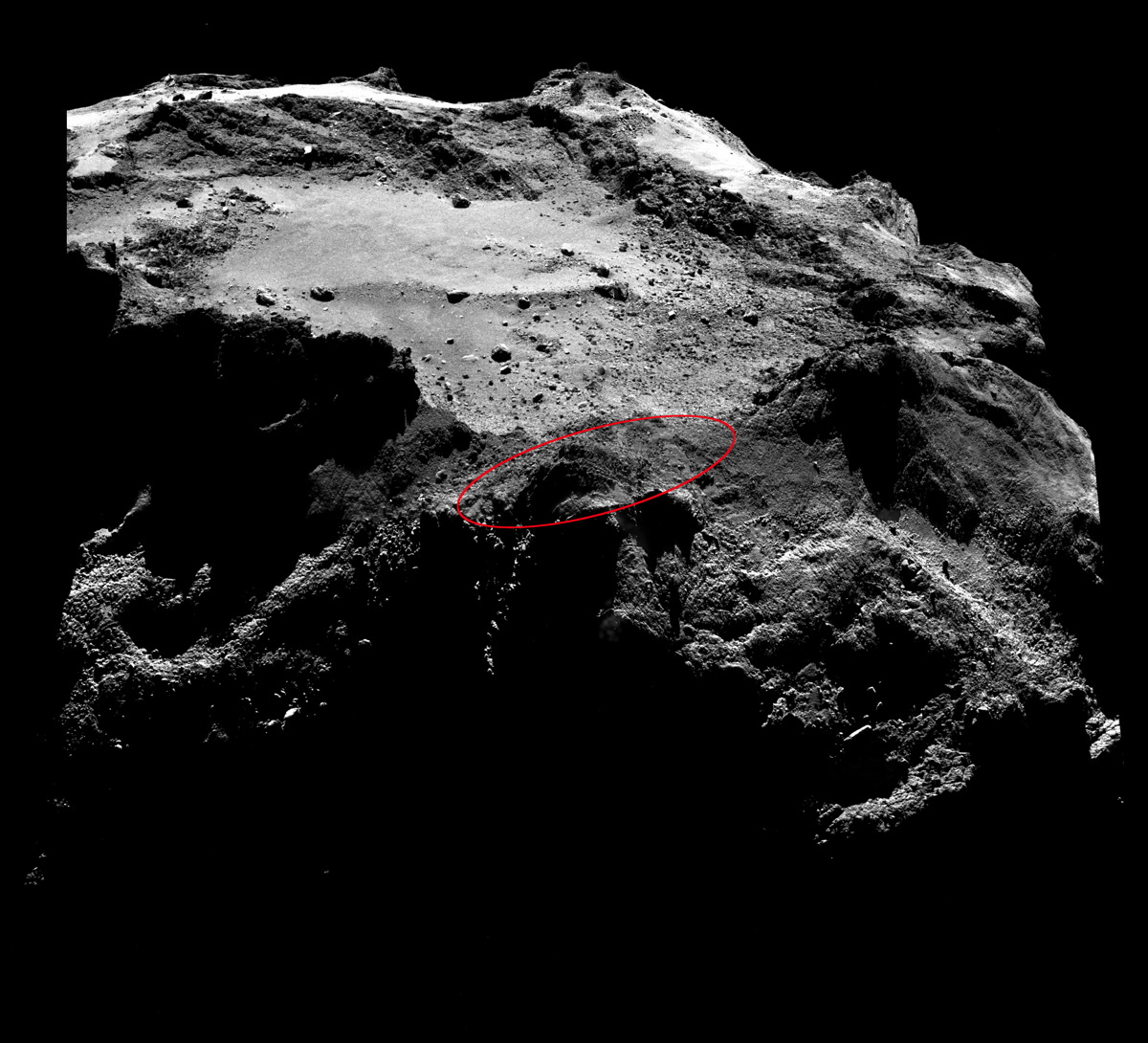Rosetta Spacecraft Listens for Wake-Up Call From Philae Comet Lander

The first human-made spacecraft to soft-land on the surface of a comet might be waking up soon.
The European Space Agency's Philae lander has been in a deep sleep since November. Starting this week, however, officials at ESA will start listening for signals from the probe, which could revive when enough sunlight hits its landing site.
The Rosetta spacecraft — which is currently orbiting Comet 67P/Churyumov–Gerasimenko — will listen for Philae's signals from today (March 12) through March 20. Philae could start sending through data from the comet's surface once sunlight charges its solar panels and boosts its battery power. [See photos from the Rosetta mission]
"Philae currently receives about twice as much solar energy as it did in November last year," Stephan Ulamec, Philae's project manager at the German Aerospace Center (DLR), said in a statement. "It will probably still be too cold for the lander to wake up, but it is worth trying. The prospects will improve with each passing day."
Controllers are optimistic because Comet 67P/C-G is much closer to the sun now than when Philae first made its incredible landing on the dusty body's surface on Nov. 12, 2014. Harpoons inside Philae failed to fire to secure it to the surface, so Philae drifted for two hours before coming to rest in a shadier spot than expected, nicknamed Abydos. After a few dozen hours of work, its batteries ran low and the lander entered hibernation.
Philae is designed to wake up once it receives more than 5.5 watts of power on its solar panels, and its internal temperature rises above minus 49 Fahrenheit (minus 45 degrees Celsius). The spacecraft should then turn on its receiver every half-hour to listen for Rosetta. However, to "answer" Rosetta, Philae will need to have at least 19 watts of power.
Meanwhile, controllers have sent commands to Philae that are intended to help the spacecraft conserve power, giving mission managers an even better chance of getting in touch with Rosetta.
Get the Space.com Newsletter
Breaking space news, the latest updates on rocket launches, skywatching events and more!
It's possible that not all components survived the cold as well. Philae will transmit basic information about its health once it wakes up, and controllers will make operational adjustments as needed. If the battery failed, for example, officials will plan to operate the spacecraft during the "daytime" on the comet landing site.
Philae's exact landing site has not yet been identified, but controllers continue to search for it using high-resolution pictures from Rosetta and knowledge from the "solar energy conditions" Philae had in November.
Both spacecraft and the comet are now 320 million kilometers (199 million miles) from the sun. Rosetta will continue listening for the spacecraft through its mission, which extends through much of 2015.
Follow Elizabeth Howell @howellspace. Follow us @Spacedotcom, Facebook and Google+. Original article on Space.com.
Join our Space Forums to keep talking space on the latest missions, night sky and more! And if you have a news tip, correction or comment, let us know at: community@space.com.

Elizabeth Howell (she/her), Ph.D., was a staff writer in the spaceflight channel between 2022 and 2024 specializing in Canadian space news. She was contributing writer for Space.com for 10 years from 2012 to 2024. Elizabeth's reporting includes multiple exclusives with the White House, leading world coverage about a lost-and-found space tomato on the International Space Station, witnessing five human spaceflight launches on two continents, flying parabolic, working inside a spacesuit, and participating in a simulated Mars mission. Her latest book, "Why Am I Taller?" (ECW Press, 2022) is co-written with astronaut Dave Williams.









